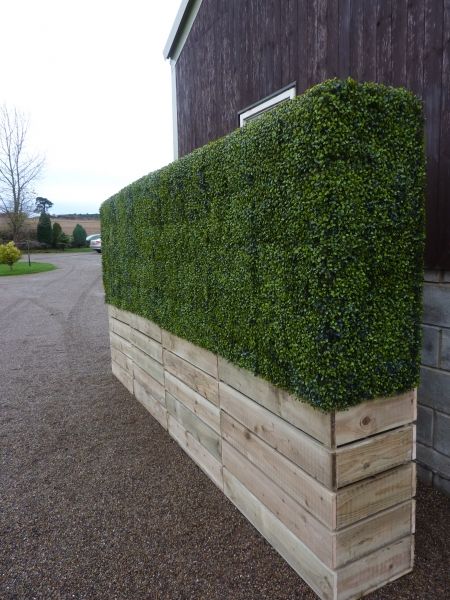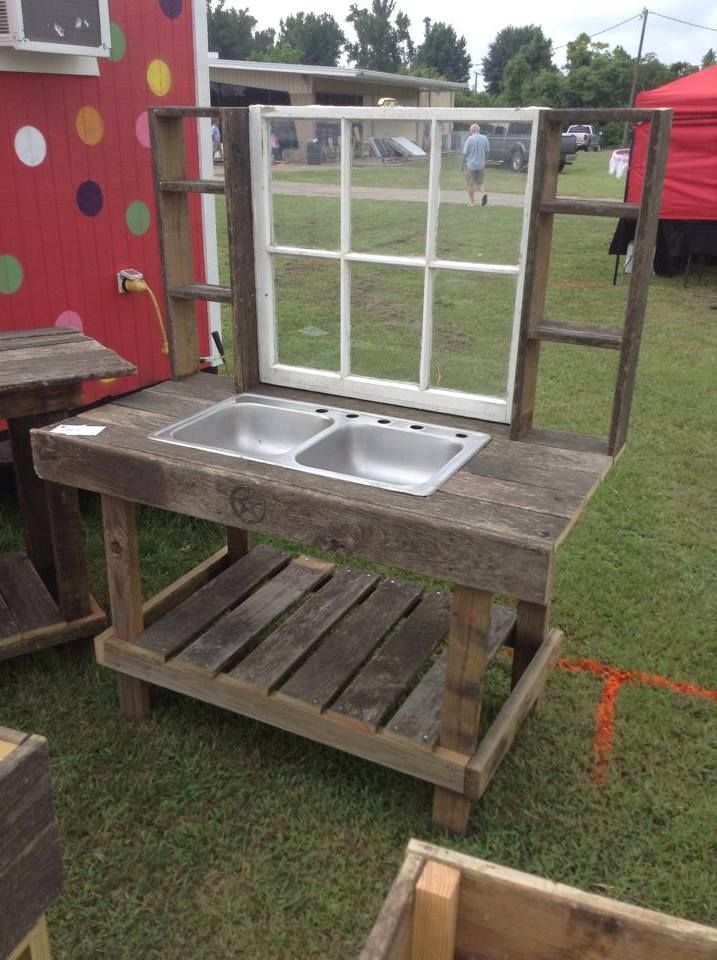Why are my peonies not blooming
Reasons Why Peonies Fail to Bloom
by Cindy Haynes
Peonies are staples in Midwest landscapes. They are easy-to-grow, long-lived, and reliable performers in the garden. However, when they do not bloom well, those of us in extension are often inundated with calls, emails, etc. There are several possible causes for failure to bloom.
Buds Don't Appear
If the buds do not appear (which is normally the case) some possible causes are:
1. Planted in too much shade. Peonies need at least 4-6 hours of direct sun to bloom well.
2. Recently divided or transplanted. Peonies that are moved or divided in late summer rarely bloom well, if at all, the following spring. Sometimes it will take 2 to 3 years for plants to re-establish well enough in their new location to bloom well again.
3. Planted too deeply. When planting, position peony buds 1 to 2 inches below the surface of the soil. Nobody knows how they know if it is 2 inches versus 4 inches, but they do! When a peony is planted too deeply, it may have beautiful foliage, but few (if any) flowers.
4. Fertilized too much. Peonies that receive excessive amounts of nitrogen rarely flower well regardless of site. Nitrogen promotes foliar growth at the expense of flowers.
5. Clumps too large? Some references state that large, old clumps may not bloom well. However, I have seen several large plants in the Midwest that seem to bloom beautifully year after year. I would imagine that a clump would have to be several decades old before it would fail to bloom. If a clump is considered too large or possibly too old, this is easily remedied by dividing the plant in late summer as a means of rejuvenation.
6. Plants are too young. If a clump can be too old - then the possibility exists that it can be too young as well. While most peonies that are sold are not typically grown from seed, there are some avid gardeners that successfully attempt this process. Plants grown from seed take about 4 to 5 years to mature and ultimately bloom.
7. Premature removal of foliage. Removal of the plant foliage in July or August will weaken the plant resulting in fewer flowers.
Removal of the plant foliage in July or August will weaken the plant resulting in fewer flowers.
Buds Appear, But Don't Open
If buds appear - but fail to open, some other possible causes include:
1. Late freeze. A hard freeze in May (much like the one we had last year) may damage or destroy the flower buds. Fortunately, this doesn't happen often.
2. Other extreme weather conditions. Extremely dry conditions in summer may weaken plants and result in fewer flowers the following season.
3. Fungal diseases. Botrytis blight or other fungal pathogens infrequently attack the flower buds, primarily when conditions are cool and wet. For prevention, the best practices are removing the dead buds in late spring and removing any diseased foliage at the end of the growing season.
4. Insect pests. Also on rare occasions, thrips or other insect pests can damage and distort flower buds and thus reduce flowering. Insecticides are usually ineffective since the damage is often done early in the season.
5. Undernourished. This is another rarity in most Iowa soils. Plants that are growing poorly (weak, spindly, yellowish or "off-color") are not vigorous enough to bloom (but may set buds). Transplanting into a more favorable location and fertilizing lightly after establishment would be beneficial.
That's it. The most common reasons peonies fail to bloom are cultural (planting in too much shade and planting too deeply). Remember that peonies are tough and often survive for many years in "not so ideal" sites. However, if they fail to bloom one year - watch out - everyone notices!
Peony.
White peony.
Issue:
April 19, 2006
Page References:
Category:
Garden Management and Maintenance and Design
Perennials
Tags:
abiotic problem
abiotic disorder
failure to bloom
Authors:
Links to this article are strongly encouraged, and this article may be republished without further permission if published as written and if credit is given to the author, Horticulture and Home Pest News, and Iowa State University Extension and Outreach. If this article is to be used in any other manner, permission from the author is required. This article was originally published on April 19, 2006. The information contained within may not be the most current and accurate depending on when it is accessed.
If this article is to be used in any other manner, permission from the author is required. This article was originally published on April 19, 2006. The information contained within may not be the most current and accurate depending on when it is accessed.
10 Reasons Why Your Peonies Aren’t Blooming
When I published this post about fertilizing peonies, I already knew I was going to write about some of the reasons why some peonies don’t bloom. But my decision was soon validated after I shared the link to my post on social media.
Not one, not two, but three of my Facebook friends complained about having (or having had) peonies that didn’t bloom. Or if the plant did set buds, the peony buds didn’t open.
And what is more interesting (at least for me, as a plant writer) is that every case looks a little bit different – someone has just planted the peonies, while someone else suspected the bush had been in the new-to-them garden for at least a decade. One of my friends is obsessed with reading all the gardening advice they can find, while another has more of a laissez-faire approach to their backyard blooms.
One of my friends is obsessed with reading all the gardening advice they can find, while another has more of a laissez-faire approach to their backyard blooms.
So I decided to dig deeper and explain the main reasons why your peonies don’t bloom, and what you can do to solve the problem:
1. Your peonies aren’t supposed to bloom at this time.
Do you know for sure what kind of peonies you have? I don’t mean to sound condescending, so I apologize if my question comes across as such. But with hundreds of peony cultivars available on the market, you have to make sure you know what kind you have before worrying about their lack of blooms.
Some peonies bloom in late spring, while others may bloom in midsummer. Depending on the climate you garden in, that can sometimes translate to a two-month difference in blooming time.
So before you reach out for that bottle of fertilizer, make sure you’ve got the timing right.
You can extend the blooming seasons of your peony patch by interspersing cultivars with different bloom times.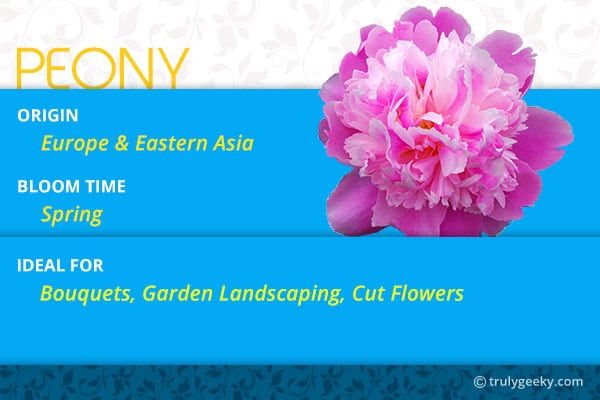 Always check the grower’s label for this information before you purchase a new plant.
Always check the grower’s label for this information before you purchase a new plant.
Here are a few suggestions to get you started:
Peonies that bloom in mid-spring:
‘Chocolate Soldier’
‘Athena’
‘Early Scout’
Peonies that bloom in late spring:
‘Claire de Lune’ peonies are early bloomers.‘Claire de Lune’
‘Court Jester’
‘Rimpo’
‘Coral Sunset’
Peonies that bloom in early summer
‘Shawnee Chief’
‘Felix Supreme’
‘Duchess of Kent’
‘Mother’s Choice’
‘Cora Louise’
‘Sarah Bernhardt’ peonies bloom in early to mid-summer.Peonies that bloom in mid-summer
‘Sarah Bernhardt’
‘Mr. G.F. Hemerik’
‘Bowl of Beauty’
‘High Noon’
2. Your peonies are too young to bloom.Speaking of planting new peonies, keep in mind that it takes about three years for a small plant to get established enough to put out a rich display of blooms.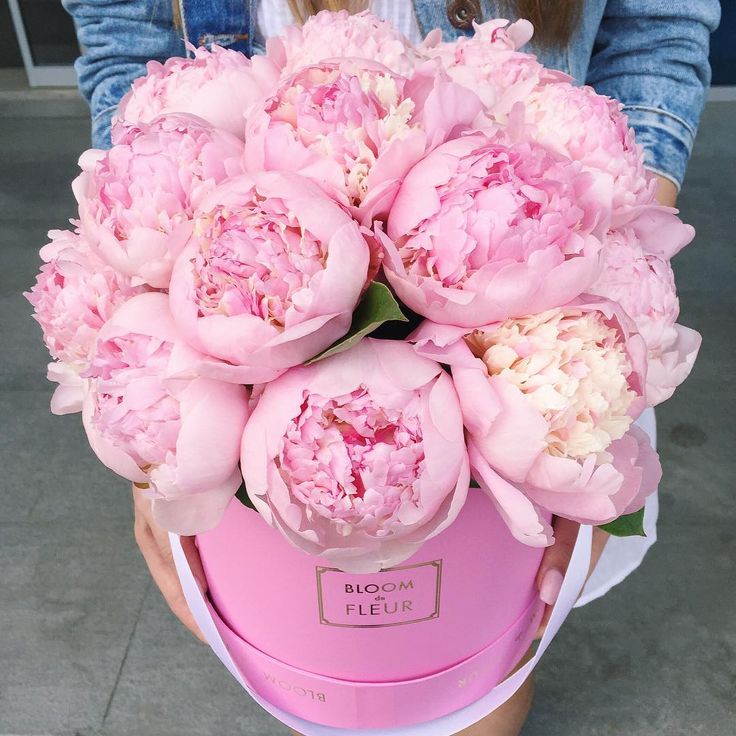
If you’ve just planted your peony, you should allow it some time to get acclimated to its new location. The first order of business for the plant is to redirect most of its energy into root formation, with very little energy left for blooms.
Young peony shoots in early springAlso, try to resist the temptation to harvest blooms for flower displays during the plant’s first few years of growth.
And if you have successfully grown your peonies from seed, first of all, hats off to you! Secondly, you should know that it takes much longer (about four to five years) for plants grown from seeds to reach maturity and bloom.
3. You’ve just divided and transplanted your peonies.To avoid disappointment, treat your newly transplanted peonies as if they were young plants because in essence, they are. Even if you have divided and removed them from an older, more established bush, you shouldn’t expect the new transplant to perform as well as the older growth. At least, not in the beginning.
At least, not in the beginning.
This is especially true for peonies that have been divided in late summer – they will not bloom well the following spring, since you’ve interrupted their fall bud setting. Unfortunately, that’s the best time for dividing peonies but be prepared for slower growth for at least one season.
4. Your peonies are planted too deep.Whether you’re planting a new peony that you’ve just purchased or a root division that you took yourself, make sure not to plant it too deeply. The “eyes” (the tiny shoots) of the peony tubers should only be about one or two inches below the surface of the soil.
The “eyes” of the peony tuber should not be planted too deep.If you plant your peonies too deep, you may get some gorgeous foliage, but very little bloom. If this happens, just count it as a lesson learned and have patience until the next season. The plant will work itself into a better position before the arrival of the next growing season and you’ll get beautiful blooms.
While we’re talking about planting depth, make sure you take into consideration the layer of mulch that you’ll be adding on top (to keep the moisture in, the weeds down and the soil temperature even, of course). Plant or transplant with that added height in mind.
5. Your peonies need more sun.One of the most common misconceptions in gardening (and one that I often catch myself believing, even though I should know better) is that “tolerant = thriving.”
Let me explain. In the case of peonies, the fact that they can tolerate shade doesn’t mean that they will thrive in the shade.
Your peonies will thrive in full sun and need about six hours of direct sunlight in order to store enough energy for beautiful blooms. Yes, they will tolerate light shade, and they may even set buds, but the bloom will be sporadic.
These young peony shoots need more sun.This is an important factor that sometimes changes without us even noticing. For example, when you first planted your garden a few years ago, you made sure to plant your peony in full sun.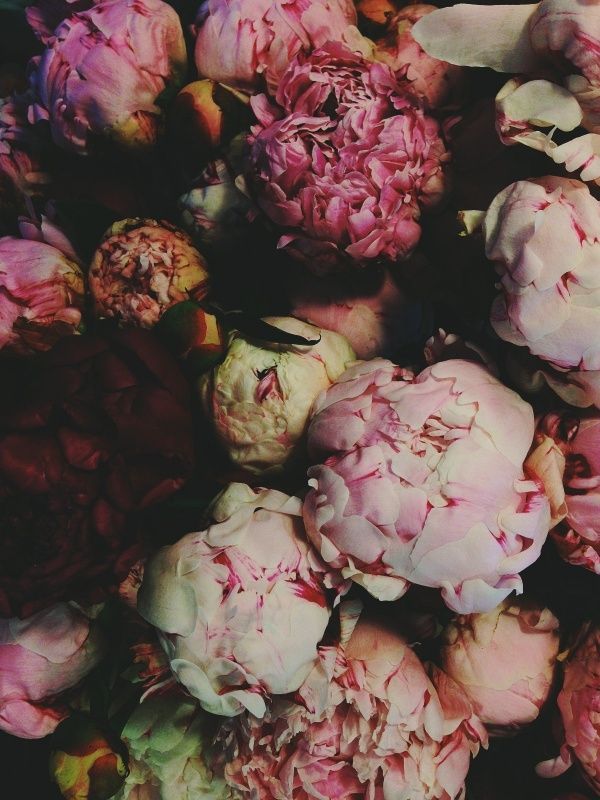 But in the meantime, the shade map of your backyard may have changed. Maybe you put up some structures (such as a gazebo or a pergola) or maybe some of the trees and shrubs in your yard (or the neighbors’) are casting more shade than when you first decided on a spot for your peonies.
But in the meantime, the shade map of your backyard may have changed. Maybe you put up some structures (such as a gazebo or a pergola) or maybe some of the trees and shrubs in your yard (or the neighbors’) are casting more shade than when you first decided on a spot for your peonies.
What you can do in this case is to dig out the peonies in the fall and transplant them to a new area that gets enough sunlight.
6. You’ve used too much fertilizer on your peonies.In my opinion, over-fertilization is a case of good intentions coupled with poor execution. Although sometimes it’s also a case of following the instructions on the bottle of fertilizer (which often overestimate how much fertilizer you need).
First of all, keep in mind the key to fertilizing any plant that blooms: low nitrogen. Nitrogen, one of the main components in fertilizers, promotes foliar growth. But the more energy the plant puts into lush foliage, the less energy it has to devote to flowers. (Yes, even if you’ve been feeding it.) So you may have a green robust bush with only a couple of flowers in bloom.
(Yes, even if you’ve been feeding it.) So you may have a green robust bush with only a couple of flowers in bloom.
The solution, especially if you’re prone to over-fertilizing, is to add organic compost to the soil around the peony plants and work the compost into the ground (gently, don’t disturb the root structure).
You can also add a balanced fertilizer (10-10-10) or a fertilizer low in nitrogen (5-10-10) in early spring, before the new growth appears.
For a complete guide on how to fertilize peonies, have a look at this article.
7. You pruned your peonies too aggressively or too early.Peonies use their foliage to feed the roots below through photosynthesis. So even when the flowers are gone, the plant is still working hard for next year’s blooms that are beginning to form under the surface of the soil. If you disrupt this cycle by pruning the foliage too early, before it’s had time to feed the new growth, you may end up paying for your impatience the following growing season.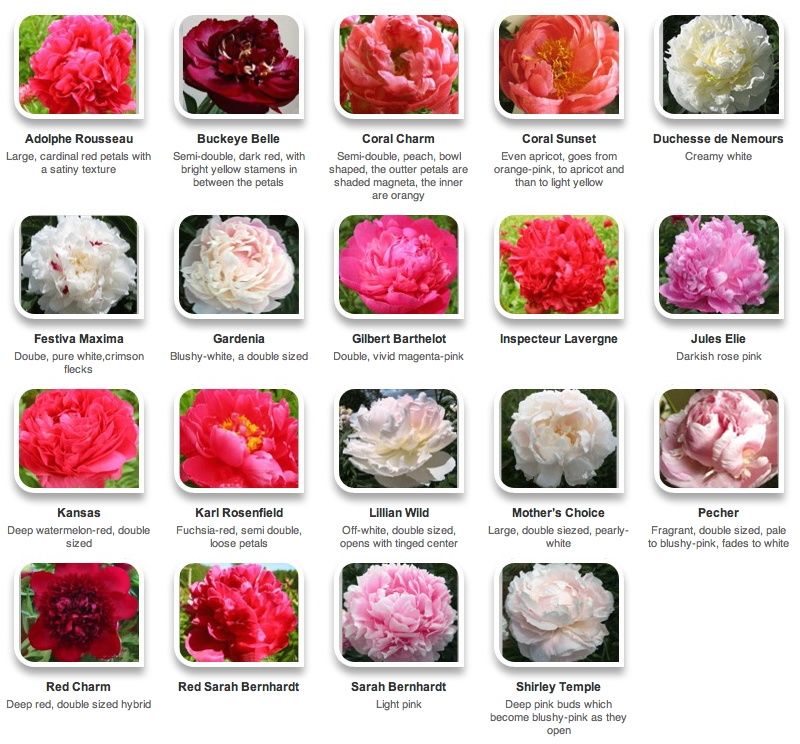
So don’t remove the foliage prematurely. You should only cut it back to the ground after the first frost, when the leaves have browned.
And if you’re growing tree peonies, never prune them down. Unlike their herbaceous cousins, tree peonies are shrubs and they will not grow back if you chop them down to the ground.
8. Your peonies suffered from late-freeze damage.This is often the case when the buds do appear, but they never open up into full blooms (a phenomenon also called ‘bud blast’). In my opinion, it’s even more irritating than having no buds at all, because it does create a sense of anticipation that fails to materialize.
Unfortunately, this happens more and more often because of unusually warm early spring spells. Plants are tricked into believing it’s time to bloom, then a hard freeze in late April or May comes and zaps your peony’s blooms.
You could try to insulate the plant with a frost cloth or improvise a mini-tunnel.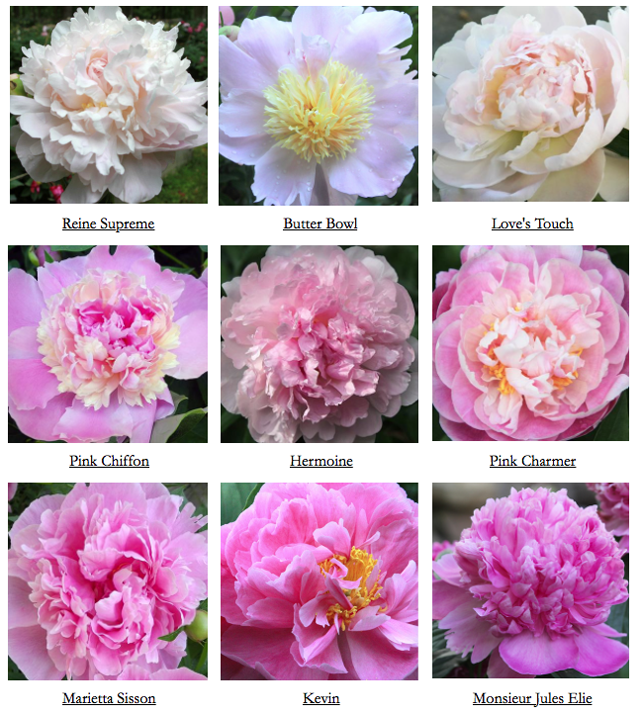 But if the temperature drops significantly below freezing for more than a day, there’s not much you can do about it.
But if the temperature drops significantly below freezing for more than a day, there’s not much you can do about it.
Again, this is another scenario in which your peony does get buds, but never blooms.
One of the most common fungi to attack flower buds, especially in wet and cool conditions, is the Botrytis blight, also known as gray mold. You’ll see dark splotches on the stem and on the leaves; often, the peony will look wilted and the bud will just turn brown and shrivel.
Let’s just say Botrytis blight is not a pretty sight. You can try to fight it by using a fungicidal spray specially designed for Botrytis. Unfortunately, the blight spreads very fast which makes it hard to catch in the early stages.
The best solution is to clean the site for the following year. Remove and destroy any diseased foliage or buds as soon as you notice them. Improve air circulation and try to keep the foliage dry when you water the peony bush.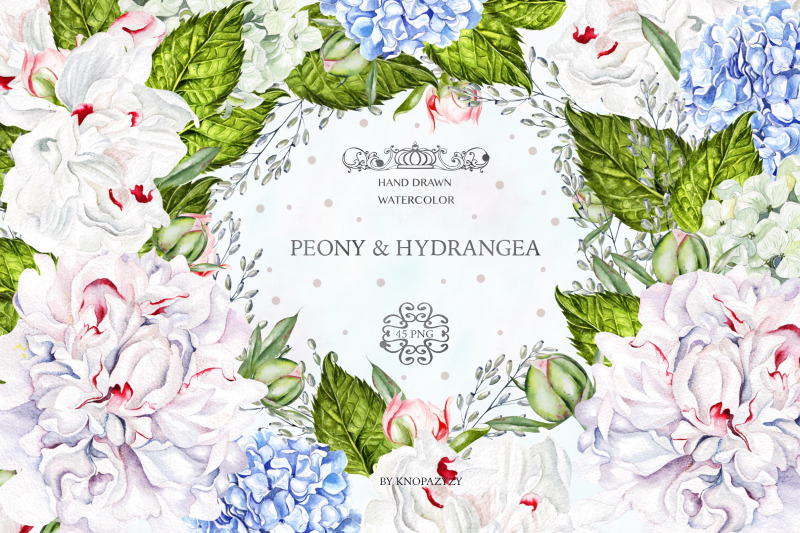 Avoid using spray hoses or dousing the plant in water.
Avoid using spray hoses or dousing the plant in water.
Peonies are not necessarily territorial plants, and they don’t spread aggressively. But they still need to have their own space, especially if they’re under threat of being encroached upon by shrubs or trees.
Peony roots, no matter how robust, cannot compete with the root systems of a tree, which can create dry conditions and very compacted soil. This can often result in poor blooming or no blooms at all.
I hope this explanation of why your peonies aren’t blooming has been helpful. I know it may look overwhelming, especially for new gardeners, but if you work to eliminate the causes methodically and with a lot of patience, you will be rewarded with a wave of blooms next growing season.
Why peonies do not bloom: reasons for what to do
Peonies are luxurious in their lush bloom, loved by many flowers, are very popular with gardeners and summer residents. They are easy to grow, require very little maintenance, and the returns from planting are generous.
They are easy to grow, require very little maintenance, and the returns from planting are generous.
Beautiful, ornamental bushes with carved dark green foliage and chic multi-colored inflorescences that are not inferior to roses in their splendor, are a real decoration of the garden.
Reasons why peonies do not bloom
And yet, there are unfortunate situations when expectations are not justified and the long-awaited flowers do not appear or bloom. What happens in such cases and how to correct the situation? In fact, there can be many reasons, and for a start it is worth eliminating obvious errors, and then eradicating serious problems - sometimes in the truest sense of the term.
The most common mistakes due to which peonies do not bloom
Sometimes, the lack of peony flowering is not a problem at all, but is just a consequence of the gardener's inexperience:
- The rooted rhizome of the plant was poor quality and weak. In this case, the peony will take up to three years to gain strength and bloom.

- The flower has been growing in one place for more than 5 years without transplants and has grown old. To resume its flowering, it is enough to divide it into several parts and transplant it to a new place.
- When planting, the seedling is insufficiently or excessively deepened into the ground. The ideal parameter is a distance of about 5 cm between the surface and the upper bud of the seedling.
- The peony was planted in a shady place. The lack of sunlight directly affects the intensity and quality of flowering.
- Plant planted in close proximity to trees. In this case, the peony simply lacks nutrients and moisture.
- The area where the peony is planted is too dry or moist. Both situations are detrimental to the flower.
In order to avoid or eliminate the listed problems, it is enough to transplant the plant to a new place, in strict accordance with the recommendations of specialists. And it is better to buy planting material from trusted suppliers. In particular, the Becker online store guarantees the quality of its seedlings and replaces even seedlings damaged during transportation with new ones.
In particular, the Becker online store guarantees the quality of its seedlings and replaces even seedlings damaged during transportation with new ones.
Proper care is the key to abundant flowering
Among gardeners, there are many who do not bother paying too much attention to the peculiarities of growing certain plants. All worries are summarized according to a specific algorithm of activities such as: “water-fertilize-cut” with average watering and fertilizing regimes. In fact, for each plant, including peonies, it is desirable to follow specific rules.
Most often, peony bloom stops due to the following problems:
- Over watering. Peonies are watered abundantly, but rarely - once every two to three weeks. Daily watering will harm
- Insufficient watering. One adult bush with a competent watering regime requires from 15 to 30 liters of water
- Overfeeding with fertilizers, most often with nitrogen.
 Peonies are best fed after flowering, during the laying of future buds
Peonies are best fed after flowering, during the laying of future buds - Plant starvation. Last season, the plant was not fertilized after flowering and did not have enough resources to lay buds
- Too acidic soil. To do this, it is enough to simply analyze it. The situation can be corrected by liming the soil.
- Excessive seating, transplanting and cutting of flowers. - It is recommended to transplant and divide the root of peonies without the danger of depletion of the plant, no more than once every five years. When cutting flowers, leave most of the stems. Cut off no more than a third of them.
Diseases and pests that prevent peonies from blooming
In addition to the above factors that can be dealt with, weather conditions can interfere with the flowering of peonies - for example, heavy rains during the formation of buds, too hot and dry weather, which provokes overheating of plants. Also, rodent invasions that damage the root system are dangerous.
Well, the most unpleasant factors for the lack of flowering are peony diseases:
- Gray rot damage.
- Cladosporiosis (brown spot).
- Lemoine's disease.
- Infestation by nematodes (parasitic species).
- Viral diseases.
Most of these diseases, alas, require drastic measures - the destruction of the plant and thorough soil treatment with fungicides.
The main secrets of regular peony flowering
Good news, even after getting acquainted with all the possible troubles, there is still. Timely preventive measures can prevent diseases and even stop their development in the early stages. To prevent such troubles, you should only:
- Plant only high-quality, healthy peony seedlings.
- Choose a sunny, wind-sheltered, open, well-drained planting site.
- Adhere to optimal agricultural practices for peonies.
- Remove weeds and diseased leaves in a timely manner.
These simple rules are the key to the successful cultivation of beautiful and healthy peonies, and indeed any garden crops. A little knowledge, experience, skills and care, and your peonies will delight you with many years of lush flowering!
A little knowledge, experience, skills and care, and your peonies will delight you with many years of lush flowering!
Published: 19 Mar 2018
Views: 19257
(Votes: 954, Rating: 4.7)
Share with friends:
Why peonies do not bloom: 6 most common reasons
1
1 Peonies are the decoration of any personal plot, in theory. But if the plant constantly blooms poorly or does not bloom at all for many years, it's time to sound the alarm. Perhaps he doesn’t like something, or an inexperienced grower misses some important nuances of growing. Let's figure it out together.
Why doesn't the peony bloom? Several reasons could have a detrimental effect on your plants at once, the main ones lie in the illiterate care of this crop. Let's consider each.
Reason 1. The peony grows in the "wrong" place
The first reason for the lack of peony flowering is the wrong choice of its planting site. If the plant, in principle, is uncomfortable, and it spends all its strength on survival, you must admit that there is no time for flowering.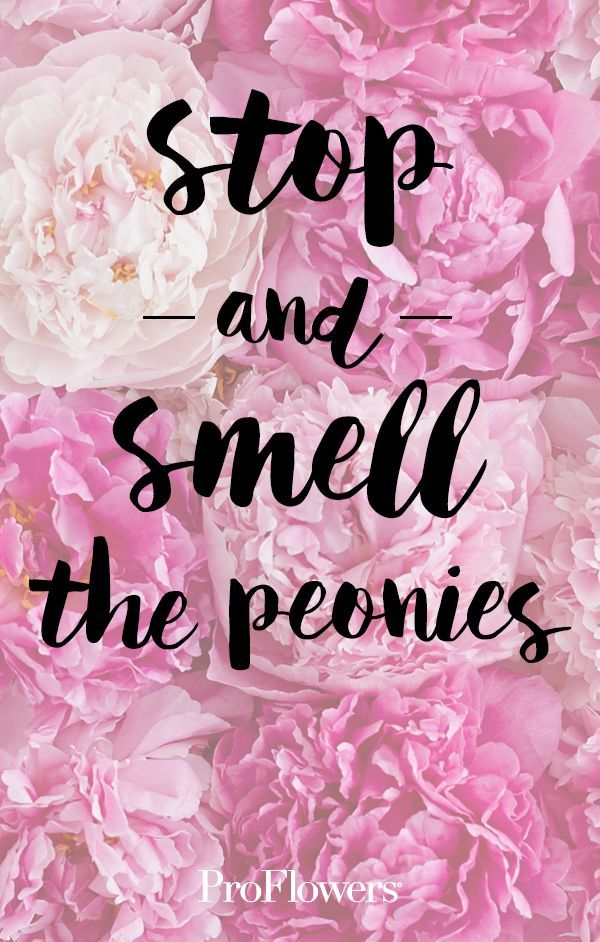
So before you start this culture on the site (in principle, like any other), find out more about its preferences. In the case of a peony, it is also necessary to carefully approach the choice of a landing site because it will “live” in one place for many years.
What place would a peony prefer to grow well and bloom luxuriantly? First of all, sunny - even a couple of hours of regular daily shading can lead to a sharp deterioration in the quality of flowering of this crop. You also need to ensure that the area with peonies is protected from constant winds and drafts.
Secondly, you need to remember that the soil for the peony should be slightly alkaline and always well-drained - stagnant water in wetlands or close groundwater also negatively affects plants - their roots quickly rot.
It is not necessary to place peonies in the zone of the root system of trees and large shrubs, because lack of moisture and nutrition can affect their development.
Planted near the wall of a building (closer than 1. 5 m), peony bushes in the heat may suffer from overheating, in winter and spring - from snow blockages or drops.
5 m), peony bushes in the heat may suffer from overheating, in winter and spring - from snow blockages or drops.
Cause 2. The peony is incorrectly planted or transplanted
Proper planting (or transplanting) of peonies is another guarantee of their good flowering, so take this procedure responsibly.
For planting, choose healthy sections of the plant without cracks, growths, traces of damage, spots of an incomprehensible color. The divisions should have 2-4 renewal buds and at least 2-3 light adventitious roots more than 5 cm long (it is through them that the plant will feed at first).
The planting hole for the peony should be large enough (at least 60×60 cm) so that the plant can form a strong root system. A drainage layer should be located in the pit, and a specially prepared fertile soil mixture should be placed on top (garden soil, 1-2 buckets of compost or humus, 200 g of superphosphate and 300-400 g of ash).
Do not plant the bush either too deep or too close to the surface. The optimal depth will be when there is a layer of earth of 5-7 cm above the upper bud. The buds may eventually be above the soil surface, then they will be adversely affected by spring frosts and summer heat. In this case, the peony should be dug up, deepen the hole and lower the plant into it along with a clod of earth. If the growing bush is too deep, it must be carefully lifted and pour soil under the roots.
The optimal depth will be when there is a layer of earth of 5-7 cm above the upper bud. The buds may eventually be above the soil surface, then they will be adversely affected by spring frosts and summer heat. In this case, the peony should be dug up, deepen the hole and lower the plant into it along with a clod of earth. If the growing bush is too deep, it must be carefully lifted and pour soil under the roots.
Also remember that the older the peony bush becomes, the weaker it blooms. Therefore, if you want abundant flowering, once every 8-10 years you need to rejuvenate peonies - dig them up, divide them so that there are 3-4 buds on each division, and plant them.
Reason 3. Peony lacks nutrients
In spring and summer, during the growing season, peonies absolutely need to be fed - only under this condition will you achieve regular lush flowering.
You can ignore top dressing only in the first year or two of a peony's life, and then only on condition that enough fertilizer was initially applied to the planting hole. The rest of the time every year, peonies require top dressing, otherwise they will not lay buds, or they will not fully open.
The rest of the time every year, peonies require top dressing, otherwise they will not lay buds, or they will not fully open.
Lack of fertilizers peonies tolerate more easily than their excess (especially nitrogen, which in excessive amounts affects the growth of green mass to the detriment of flowering).
The first root dressing of peonies is carried out at the beginning of growth, as soon as red sprouts hatch, adding nitrogen and potassium fertilizers under the plant, which come to the roots with melt water.
The second top dressing can be carried out during the budding period, applying a complete mineral or organic fertilizer. Fertilizers can only be applied after rain or watering.
The third and most important top dressing when the renewal buds are formed is after flowering (after two weeks), when potassium and phosphorus are again offered to the plant.
In order to enjoy spectacular peony blooms throughout the season, young and mature bushes are fed foliarly once a month.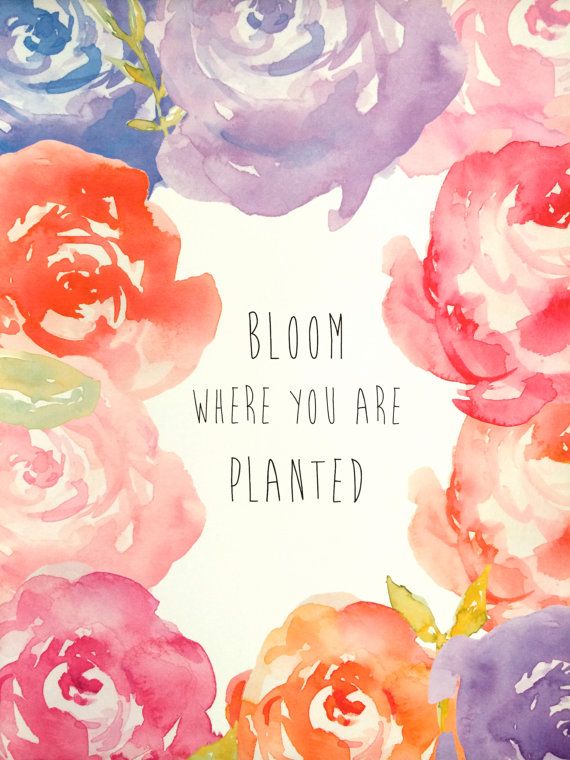 To do this, peony leaves are sprayed (or watered from a watering can with a fine sieve) with a solution of complex mineral fertilizer.
To do this, peony leaves are sprayed (or watered from a watering can with a fine sieve) with a solution of complex mineral fertilizer.
Cause 4. Peony lacks moisture
We have already mentioned that the peony does not tolerate stagnant water at the roots, but loves to "drink" very much. Especially plentiful watering should be in the spring during the budding period and at the end of the season, when renewal buds are laid, as well as in dry hot weather.
Remember that there are practically no suction roots at the base of the peony - they are all located further from the center of the bush, on the periphery! Therefore, watering should be carried out in a circular zone at a distance of 20-40 cm from the center (this distance is the greater, the older and larger the bush).
Experienced growers advise digging a circular groove about 10 cm deep around the bush and watering it.
3-4 buckets of water are consumed per plant when watering. As for other crops, watering peonies is best done during a period without active sun - in the morning or in the evening.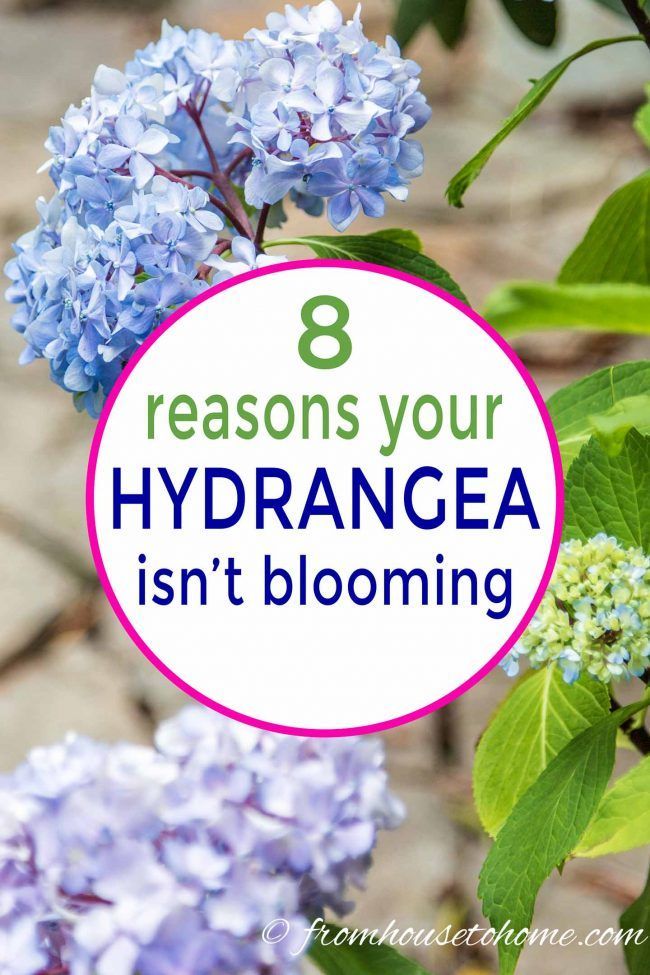
But spraying peonies during budding and flowering is not worth it. This will spoil the appearance of the flowers and may even contribute to the infection of the plant with gray rot.
Cause 5. Peony buds were not removed in a timely manner
You can regulate the decorativeness of the peony bush by yourself by cutting the buds at an early stage of their formation. If you are growing cut peonies and are interested in getting smaller but larger top flowers, side buds can be removed when they reach pea size.
If you plan to see a peony bush on the site, abundantly and completely covered with flowers, this is not necessary. Just remember that year after year such mass flowering can weaken the plant as a whole, preventing the root system from fully developing. This is especially true in the first couple of years after planting, when it makes sense to sacrifice "extra" buds for the future.
But the leaves and stems should not be cut at the root immediately after the peony has faded - after all, it is the aerial part of the plant that is responsible for laying the buds for future flowering.







